 At times, writing and teaching about wine can be a solitary experience. That's why I was happy to engage in some human to human contact at the recent Wine Tourism Conference held in the welcoming wine country town of Paso Robles, California. As with most events of this kind, there was an often dizzying array of seminars to choose from, people to meet and re-connect with, and information to absorb. Here is a quick and dirty rundown of what I considered to be the main take-aways, many of which were repeated over the course of the conference.
0 Comments
 Crozes-Hermitage vineyards of Domaine Michelas Saint Jemms Crozes-Hermitage vineyards of Domaine Michelas Saint Jemms We headed north on the A7 Autoroute, leaving the ‘galet' filled vineyards of Chateauneuf-du-Pape behind us. Ahead, lay the towns of Orange and Montêlimar. The expansive vineyards of the south gave way to orchards and countryside. As we approached the village of Valence the terrain changed. The steep, terraced, hillside vineyards told us we had reached our destination - and the holy grail of Syrah - the Northern Rhone. Our destination was the town of Mercurol not far from Tain’Hermitage. We pulled into the drive of Domaine Michelas Saint Jemms, a smaller family owned and run establishment and everyone, including the winery dog Tina, were there to greet us. What makes Michelas Saint Jemm unique is that they produce wines from not just one AOC of the Rhone Valley, but several: Cornas, St.Joseph, Crozes-Hermitage and Hermitage. They are also one of the the oldest privately operated wineries in the area and the oldest family owned winery in Crozes-Hermitage. And this is truly a family affair. The property itself goes back to 1861 but wasn’t really developed until 1961 when Robert and Yvette Michelas took charge. Today, three sisters, Sylvie, Florence, and Corine, work alongside brother Sebastien and other family members, oversee the 50 hectares (just over 123 acres) of vineyards and production of 150,000 bottles (12,500 cases). Of course, the prize AOC is Hermitage - a region known to every lover and collector of French wines. The parcels (three noncontiquous parcels total 1/2 hectare/ 1.23 acres) were acquired years ago when a family friend, unable to keep the land in his family’s hands, asked Robert Michelas if he would be interested in purchasing the vineyards. Knowing that opportunities to purchase these scarce and highly prized blocks were few and far between, he jumped at the chance and the rest is Michelas Saint Jemms history!
We were soon loading into the vineyard vehicles and heading away from the winery and through the countryside. We climbed higher and higher into the hills of Crozes-Hermitage, past crumbling castle ruins and row upon row of flowering grape vines.  Horses-not tractors- are used in these steep vineyards Horses-not tractors- are used in these steep vineyards As we soaked in the wonderful vistas, Sylvie explained that, in 1973, Michelas Saint Jemms become an independent winery (rather than being associated with the local co-operative). Sébastien, who is in charge of all the vineyards, set about improving the quality of the fruit and several years ago, they qualified for the new H.V. E. certification. Haute Valeurs Environnmental (High Environmental Vaules) is a newer certification that emphasizes working in harmony with nature. Biodiversity is encouraged “ If there are trees, leave them. If there are grasses, leave them - don’t cut.” said Sylvie. “Birds and animals are welcome!”. We sampled several wines in this gorgeous setting including the 2012 Crozes-Hermitage Blanc, a blend of 60% Roussanne and 40% Marsanne, half of which is oak aged with the balance in stainless.Soft toast on the nose but it’s all about minerals and fruit on the palate with acacia and a touch of marzipan. Sorry to say that this wine, as well as the refreshingly fruity and fresh Crozes-Hermiage Fleur de Syrahne that we sampled next, are not available in the U.S., which I personally feel is a shame as they are delicious and both very food compatible and would be appreciated by the North American palate. Luckily, the 2011 Crozes-Hermitage ‘Signature’ Rouge is! With fruit grown on chalky-clay soils, this is an aromatic Syrah. Fresh black fruit aromas are both fruity and meaty making this a versatile sipper or dinner companion. At at suggested retail of $25 USD it is a wonderful introduction to the signature grape of the Northern Rhone. It was now lunch time. In France, this a ‘sacred’ part of the day - a time to stop and recharge with food, family, and, naturally, some wine. We were very fortunate to be invited to share this time with the family (including Tina and Emmi the cat) and soon discovered they had prepared a veritable feast of traditional fare reflecting their Drome and Ardeche regional roots.
It was now time for the next course - a local specialty of the pre-Alps region of Grenobles - Ravioles du Dauphiné. These tiny little pockets of pasta are filled with cheese, herbs and cream. Sylvie served these in wonderful ceramic dishes which, as with the other artisan table wares, were produced ‘just down the road’. Although our ravioles were topped with local Extra Virgin Olive Oil and fresh basil from the garden, we were told they were also delicious baked in a gratin with courgettes (zucchini). I can only imagine! The next selection of wines, are, I’m sorry to say, not available in the United States but would give any wine lover an excellent excuse to visit the winery! Under the ‘Terres d’Arce’ label, Michelas Saint Jemms bottles all four AOC - Crozes-Hermitage, Saint Joseph, Cornas and Hermitage and are the only independent producer to do so. These are their ‘prestige’ bottlings - what an New World winery might call their ‘Reserve’ tier, showing the distinctive character of each terroir and its interpretation of the Syrah grape. These wines consistently score highly in such respected publications as the ‘Hachette Wine Guide’ and the ‘Gilbert & Gaillard' wine magazine, not to mention Robert Parker’s ‘Wine Advocate’. We were thrilled to try all the offerings, including the Hermitage (of which they only produce 600 bottles!) and tried our best to convince everyone, especially Sales Manager Laurent Gomez, that they should make these Rhone treasures available stateside! No French meal is complete without ‘a little something’. A large dish of exquisite local peaches and apricots appeared (Hermitage is equally famous for the delectable stone fruit, it seems) plus a big platter of ripe red cherries. Another regional delicacy appeared on the table. A large, round yeast bread, ‘Pogne de Romans’ which, translated from Old French, means ‘by hands’. Similar to a brioche, these are made for special occasions and holidays and are lightly scented with orange blossom water. This particular pogne came from an old and revered bakery, L. Ronjat in the village of Saint Donat sur l’Herbasse, where they have baking since the 18th century. Too soon, it was time for the family to return to the wines and for us to get back on the Autoroute. It had been an extraordinary day, filled with the wonderful ‘connections’ that only wine can make. We felt so blessed to share in the traditions of the region and now, whenever I think of the Northern Rhone Valley I smile, remembering the day, their gracious hospitality and wines made with true love, respect, passion and joie de vivre.
Epilogue: As I was writing this post, I received a message from Jeanne. She was preparing to go and help out with the Syrah harvest in the Cornas vineyards of Domaine Michelas Saint Jemms. “Pictures, please!” I requested. How fitting that we can now see, full circle the literal ‘fruits’ of their efforts and the continuation of Vendage 2014. All photos below courtesy of Jeanne Peron, Benson Marketing who was kind enough to arrange this visit. Merci!  The San Diego International Wine Show was held last weekend, April 26 & 27 in Del Mar, California. I was invited to attend as both a member of the Press and as a presenter. Not quite sure which role was more fun! This was the third year for the event and this time they did, indeed, go international, with wineries and wines from Spain, Italy, Mexico, Portugal, Chile, Argentina and, of course, France. Local representation included Napa, Sonoma, Temecula and San Diego. For those of you who attended my seminar, "There's No Place Like Rhone!" I say thank you and hope you enjoyed such an abbreviated visit to this truly wonderful part of the wine world. Forty-five minutes goes way to fast. If you'd like to know more about the Rhone Valley, please visit my Student Resources page where you'll find all kinds of links and information on the wines and food of the region. I'd also like to thank KK LaFournaise for wrangling me into doing this, Donato Santarsieri, and Live Fit Magazine for their wonderful, live coverage of the event. Check out their YouTube page for a full recap. So, what should my topics be for next year? Disclosure: Wine tasting is a highly individual experience and, scientifically, none of us perceive wine in exactly the same way. The opinions expressed in this post are mine and mine alone and although the wines sampled were supplied by the designated wineries for review I describe them as I see them.  The connection between the grapevine and Greece is almost as old as wine itself. The ancient Greeks spread viticulture throughout the Ancient World and, for them, wine was not just a commodity but life and culture as well. So with this long history in mind, it was with great excitement that I joined with other members of the Temecula Wine Council to sample five wines kindly supplied by the “New Wines of Greece”. For many of us, when we here “Greek wine” we immediately think of ‘Retsina’, perhaps crafted in rustic old wineries from grapes we can’t pronounce! I am glad to report that nothing could be further from the truth. There has been a mammoth revival in the Greek wine industry, beginning in the late 20th century. Many local winemakers, who ventured to wine producing areas throughout the world, have returned to their roots, building shiny new production facilities that rival those of the ‘New World’. While embracing many new winemaking techniques there is desire to blend them with time-honored philosophies such as biodynamic and organic viticulture and the use of indigenous grape varieties. And so, we gathered at the Dorland Mountain Arts Colony, just outside Temecula, CA. The fresh air and solitude made for the perfect venue. Each of the six members attending the tasting were assigned one of the wines and asked to prepare a compatible dish for everyone to share. As you will discover, much of the fare paired well with many of the wines, showing just how food friendly and versatile these vintages turned out to be! First up was “Thema 2012” from Pavlidis Estate near the Macadonian town of Drama in northern Greece. A 50/50 blend of Sauvignon Blanc and Assyrtiko, (ah-SEER-tea-ko) the wine is a prime example of old meets new. The region of Macadonia has been a prime grape growing area for millennia and founder Christoforos Pavlidis has been cultivating both native and international varieties since 1998. The winery embraces modern viticulural practices on its 148 acres planted on a variety of soils in two vineyard sites. The winery itself is state of the art and visitors are welcome in their modern tasting room located on the “Wine Road of Dionysus”. The wine was delightful, with a subtle, elegant nose of lemon cream enchanced with touches of fresh green herbs. The zippy acidity and lime zest flavor accentuated the saltiness of the smoked salmon brought to pair with it. Our second vintage came to us from the home of the famous Greek varietal, Assyrtiko – the Aegean island of Santorini. 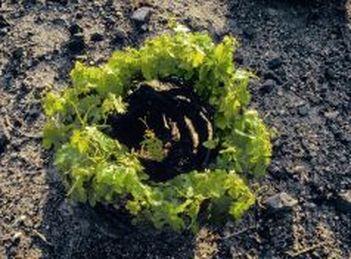 courtesy New Wines of Greece.com courtesy New Wines of Greece.com Domaine Sigalas Assyrtiko-Athiri 2011 is another example of traditional grape varietals truly showing their ‘terroir’ through more modern production. Domaine Sigalas was founded in 1991 and by 1998 had constructed a brand new winery/production center near Ola, in the northern part of the island. Their 47 acres of vineyards are planted on volcanic soils comprised of cinders, lava and pumice. They specialize in indigenous grape varieties grown in the traditional manner unique to Santorini. Vines are trained low to the ground, woven around itself like a round basket. This format, called a Kouloura meaning wreath or basket, protects the vines from strong winds and also shields the grape clusters from the intense, direct sunlight. The wine was a prime example of how the local white grapes of Greece have evolved to withstand the heat and sun of the Mediterranean without losing any of their distinctive, refreshing acidity. The clean, citrusy aromas were a true indication of what was found in the glass! Amazing, racy, mouth-watering acidity combined with a slight hint of sea air minerality and touches of lime blossoms. It was a terrific compliment to the steamed artichokes in olive oil, herbs and seasonings; the wine acting like a spritz of brightness, bringing out the flavor of the vegetable and freshness of the herbs. The last white of the evening also hailed from Macadonia - Ovilos Estate Biblia Chora 2010 a blend of a traditional native grape (50% Assyrtiko) and an international variety (50% Semillon). Vineyards here were first planted by the Phoenicians who found this “Golden Mountain” while in search of precious metals. Alexander the Great mined gold here to finance his expeditions and the Cult of Dionysus (or Bacchaus to the Romans) made their wines from Macadonian fruit. But enough history! The winery’s founders both studied in Bordeaux and returned to their homeland to make wine. The original 70 acres were planted in 1998 and now there are close to 350, all of which are farmed organically. A modern winery, built to resemble a grand Bordelais Chateau, was built in 2001 and their efforts have paid off; the wines have won numerous awards throughout the world.  This blend had a beautiful brilliant gold appearance, reflecting the 8 months the wine spent in oak. The aromas were clean and fresh with notes of golden apple, soft fruit blossom florals and a suggestion of dried apricot. The palate was supple and honeyed showing touches of mango and toasted pine nuts. It went very nicely with the food I had paired – grilled chicken Breast with herbed zucchini stuffing. The wine lifted the herbaceous notes in the dish and surprisingly, also complimented the artichokes and another traditional dish – Moussaka. Next up was the first red,“Xinomavro 2008 Urano” from Thumiopoulos Vineyards in Naoussa, also located in Macadonia. This winery is owned by Apostolos Thumiopoulos who, at the tender age of 31, is acknowledged as the ‘rising star’ in this famous wine growing region, Naoussa. His vineyards, all biodynamic, are planted on complex soils – a mixture of marl, schist and granite - in the southern part of the appellation. The winemaker embraces a minimally invasive philosophy when it comes to making wine, letting the grapes express themselves and showing their unique character, vintage to vintage. He uses naturally occurring yeast and little, if any, filtration to produce terroir driven results. This wine, made from the native Xinomavro (ksee-NO-mah-vro) varietal, showed aromas of dark strawberry jam laced with white pepper and soft touches of toasty rye bread. Dried tomato and a slightly spicy note lingered on the finish. The tannins and acidity were nicely balanced, which made it a wonderful compliment to the tasty ‘Boubaria’ – a traditional meat sausage of the area, bringing out spicy notes of cumin. It also paired beautifully with the Moussaka and some decadent spiced fig cakes! Our final wine of the evening kept us in the appellation of Naoussa and was also an expression of Xinomavro –“2007 Boutari Grande Reserve Naoussa.” The name Boutari is a familiar one around the world. It is the regions oldest winery – its history goes back 130 years – and has been an ambassador for Naoussa, the Xinomavro grape and Greek wine for almost as long. The vineyards are on the south-east slopes of Mount Vermio where the grapes enjoy lots of sunshine, generous rainfall and are shielded from the cold northerly winds. The marl soils, a mixture of limestone and clay, give the wines their rich body and ageing potential. The Grande Reserve is one of Boutari’s most collectable red wines and this vintage still has room to mature. Prune, plum and baking spices abound on the nose and palate with ripe dark berries and vanilla hanging on through the finish. The tannins are still firm and the acidity bright. Definitely a wine you would want to cellar or use a decanter or aerator to enjoy now. Also on hand was a fantastic Greek dip – feta, oregano, kalamata olives, and sun-dried tomatoes – served with pita chips that went with a variety of the evening’s wines. And lest we forget to mention the sinful chocolate brownies – frosted no less! As expected, they were a treat with both red wines and made a suitable ending to our feast. It was a terrific and enlightening group of wines that made me want to go out and find other “New Wines of Greece” to explore and enjoy. As they say in Greece “Yia Mas” - Here’s to Health!  with Linda Kissam, 1st VP of IFWTA with Linda Kissam, 1st VP of IFWTA I am so excited to announce that I was selected as the recipient of the International Food, Wine and Travel Writers Association's (aka: IFWTWA) "2013 Emerging Writer Scholarship Award" This is such an incredible opportunity and I look forward to sharing my wine related adventures. Stay tuned! |
AuthorWine lover, educator and writer. Archives
March 2017
Categories
All
|





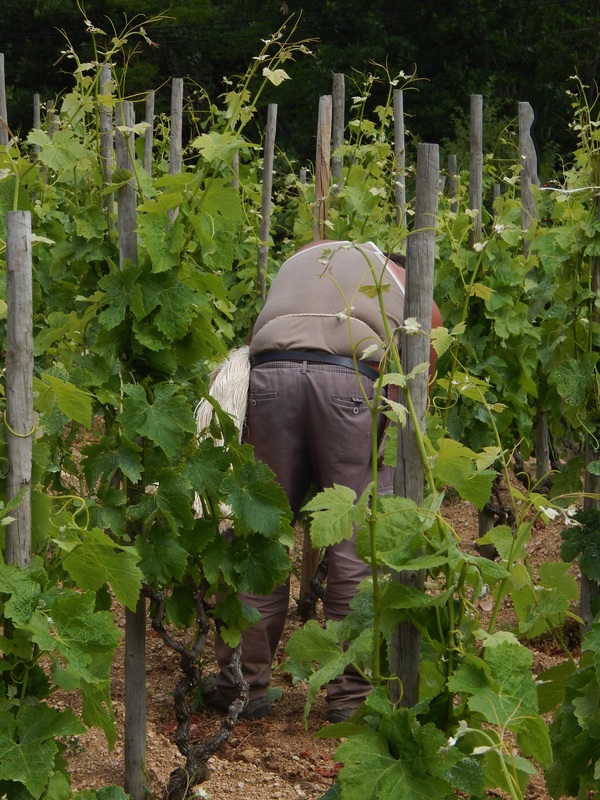








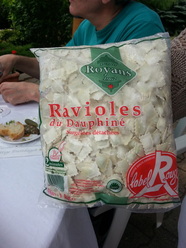



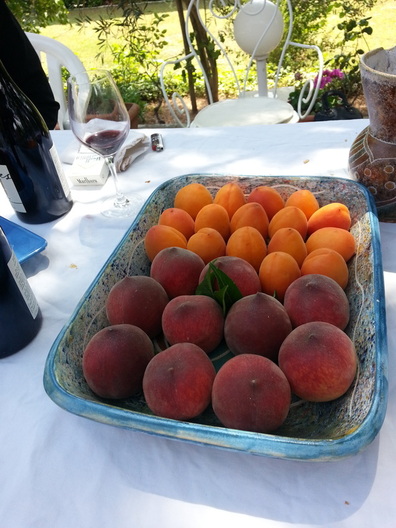
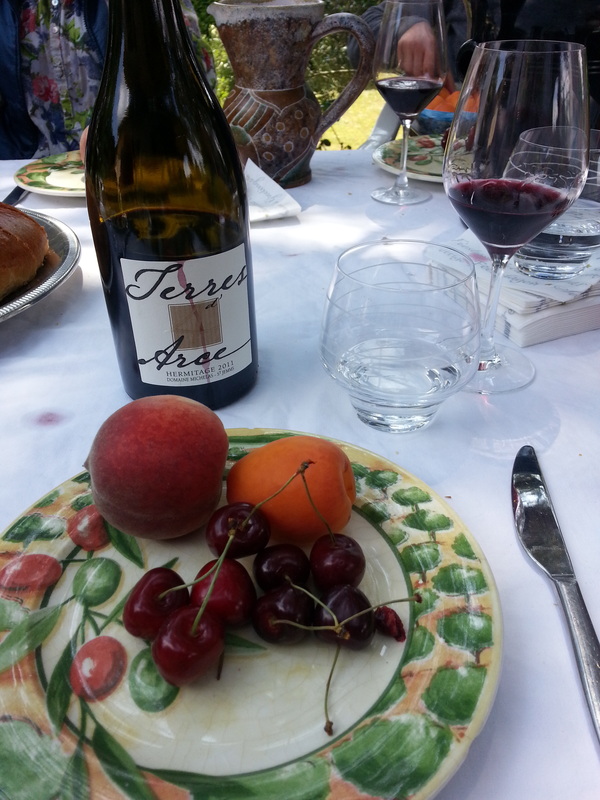



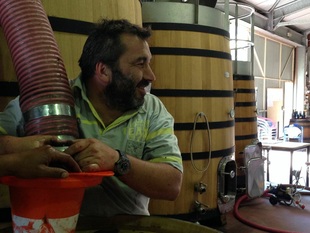

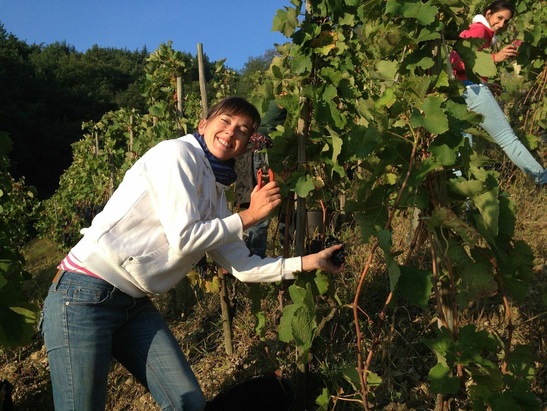

 RSS Feed
RSS Feed

